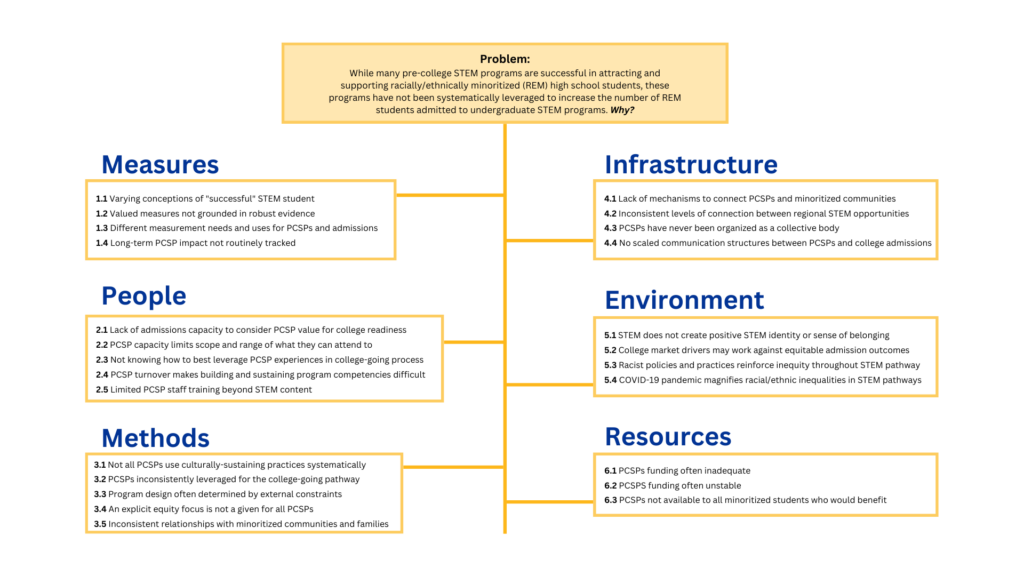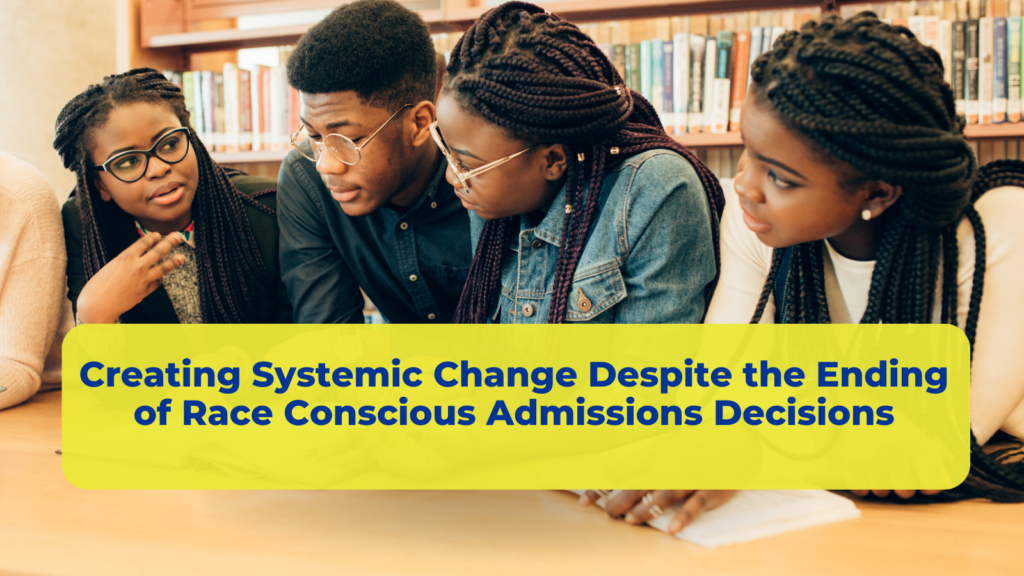Stay In Touch
Give us your email and we'll keep you in the loop on the latest STEM Push News.
Our collaborative process to understand why pre-college STEM programs working alone had not significantly broadened participation in STEM.
In 2020, the STEM PUSH Network’s root cause analysis engaged a range of partners and stakeholders in a disciplined, collaborative exploration of the system causing the problem the network is seeking to address, stated as:
Through this process, we reflected on the various ways in which oppression functions to exclude racially minoritized students from STEM, and then considered how that manifests in the context of PCSPs and admissions. This included looking at data, research, practitioner voices, and student experiences.
A fishbone diagram is an improvement science tool we use to help us visualize the results of our “root cause analysis” process.

Learn more about using a root cause analysis as a tool for forging a shared vision and partnerships.

Join Us for a Conversation about Equity, STEM & College Admissions
Wednesday, October 11 at 1:00 p.m. ET
Give us your email and we'll keep you in the loop on the latest STEM Push News.